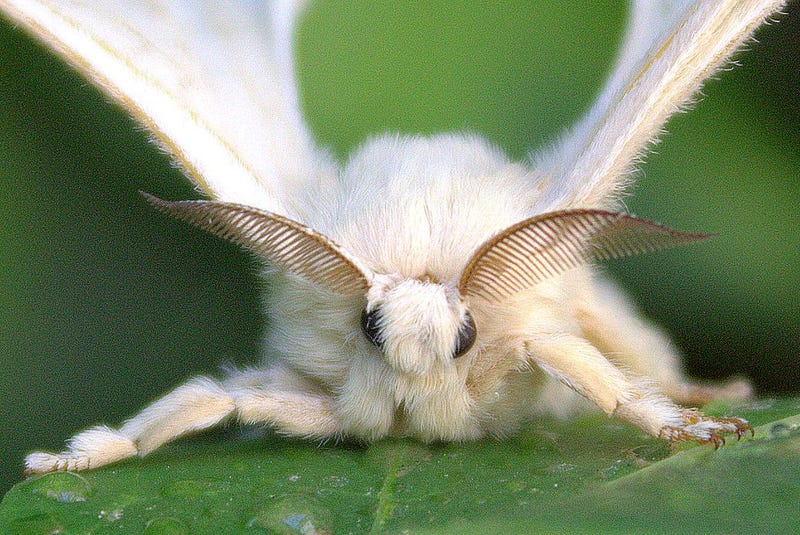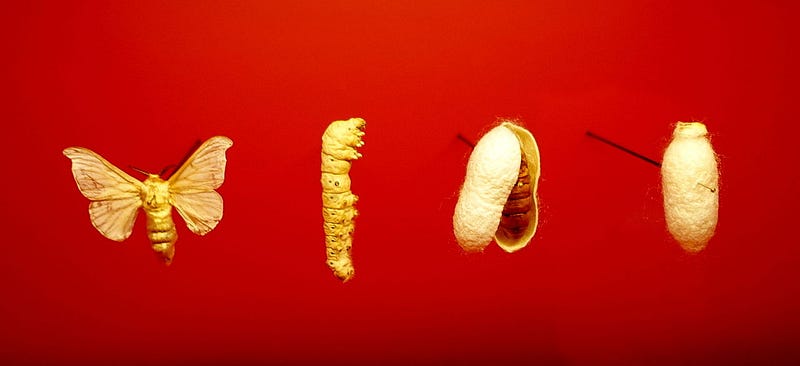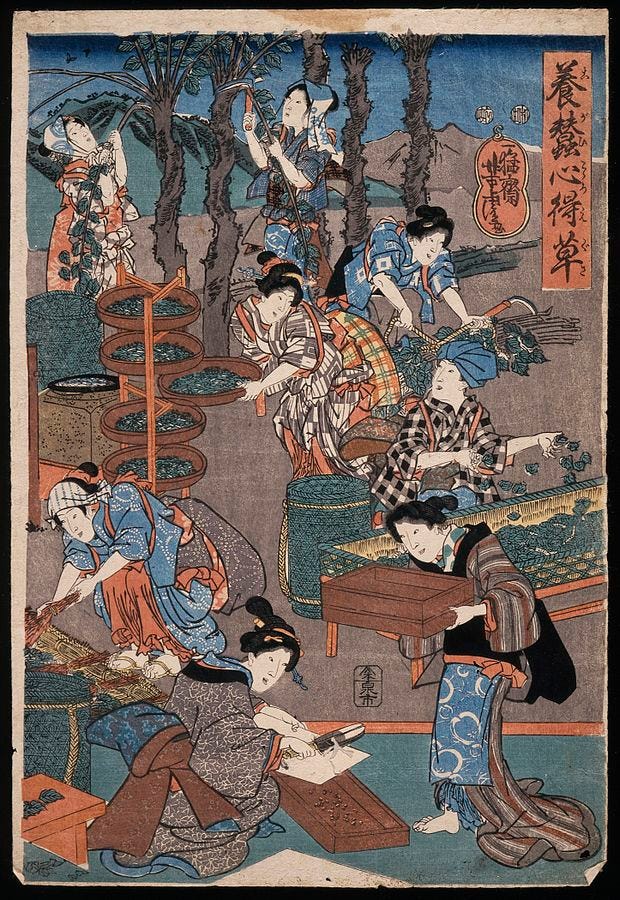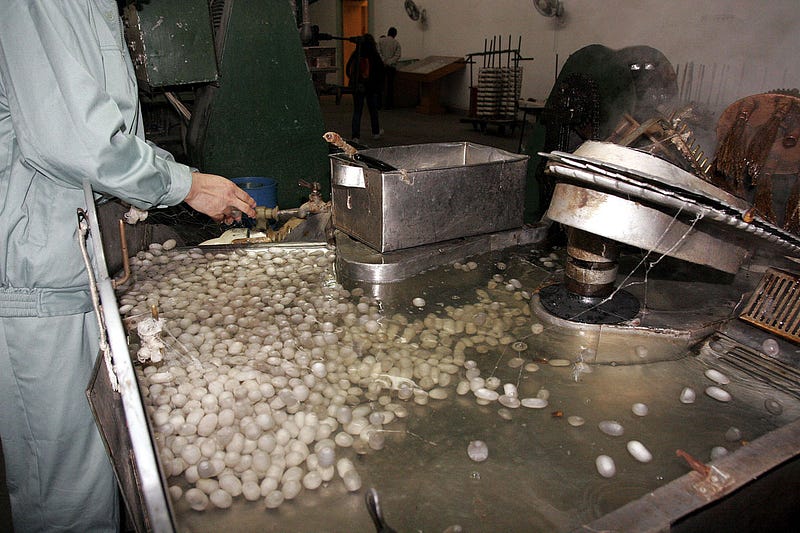The Enigmatic Journey of Silk: From Silkworms to Luxury Fabric
Written on
Chapter 1: The Origins of Silk
For over 8,500 years, silk has been revered as one of the most luxurious materials globally. It has long been associated with affluence and has significantly influenced global commerce. But how exactly do silkworm cocoons become the exquisite silk we cherish today?

Silkworms, small nocturnal moths that originated in the East, have a complex history. While they were domesticated in China over 5,000 years ago, their natural habitat is believed to have been in the Himalayan region. The production of silk primarily involves two moth species: the mulberry silkworm, which dominates production, and the oak silkworm. Unlike the oak variety, mulberry silkworms are entirely domesticated and no longer exist in the wild. Hundreds of generations of cultivation have led to their loss of flight and natural pigmentation, traits that were once crucial for survival.
Chapter 1.1: The Cocoon Creation Process
The caterpillars spin large cocoons, which serve as the source of silk threads. Unlike spiders, silkworms produce silk through their salivary glands. A typical cocoon consists of a single, fine, yet robust thread that can stretch up to one and a half kilometers.
In nature, silkworms reproduce annually, but in a controlled environment, they can produce offspring up to eight times a year. Following the female's egg-laying, larvae emerge after approximately two weeks. These caterpillars exhibit rapid growth, undergoing four molts before transitioning into pupae and eventually moths. During this transformation, they begin constructing their cocoons. Once the pupae metamorphose into moths, they secrete enzymes that dissolve the silk threads, allowing them to emerge from their cocoons. The entire lifecycle of a silkworm spans about 6 to 8 weeks.

Chapter 1.2: The Legend of Silk Discovery
The discovery of silk production is thought to have been an accidental revelation during the Neolithic era. The earliest evidence of silk threads was found in Jiahu, China, in ancient tombs, with findings dating back around 4,000 years.
One popular Chinese legend credits Empress Leizu with the discovery of silk. It is said that a cocoon fell into her tea, and while attempting to retrieve it, she noticed a long, shimmering thread unraveling. This moment marked her as the first known silk weaver, and her legacy is celebrated in Chinese mythology.
Chapter 2: The Historical Significance of Silk
For nearly two millennia, China maintained a monopoly on silk production, carefully guarding the secrets of this luxurious fabric. Silk was traded along the historic Silk Road, which extended from China through various territories to Constantinople, covering about 12,000 kilometers. While silk production secrets may have been known in ancient Greece and the Byzantine Empire, sericulture eventually spread to Sicily and then throughout Europe by the 17th century.
Silk found its applications beyond just fine clothing and accessories; it was also utilized in furniture upholstery, wallpapers, carpets, parachutes, and even bicycle tires. The cultural impact of silk is evident in the numerous terms used to describe various yarns and materials.

Chapter 3: The Art of Silk Production
The process of silk production, known as sericulture, is painstakingly labor-intensive. It involves carefully unraveling each cocoon, a method that has remained relatively unchanged since the Neolithic period. Today, cocoons are immersed in boiling water, which dissolves sericin—one of the components of silkworm saliva—allowing the delicate threads to be unwound.
The threads are then spun into thicker fibers and wound onto spools. It takes about 3,000 cocoons to produce a single kilogram of silk thread. Remarkably, a single kimono requires silk from around 5,000 cocoons. Interestingly, the natural color of the silk can be influenced by the caterpillar's diet by adding dyes to their food.

Chapter 4: The Unique Qualities of Silk
Silk possesses remarkable characteristics: it is both strong and flexible, breathable, hypoallergenic, quick-drying, and an excellent thermal conductor. These properties make it suitable for various climates.
However, contemporary silk production has faced criticism from animal rights groups, as the boiling process results in the death of the pupae. Efforts are being made to adopt more ethical practices, such as allowing moths to emerge from their cocoons, albeit at the cost of producing shorter silk threads. This method is known as ‘ahimsa silk,’ derived from a principle in Hinduism and Buddhism advocating respect for all life. Ahimsa silk is generally more expensive than conventional silk. Additionally, 'wild silk' is produced from cocoons collected from nature or specialized plantations, utilizing various silkworm species.
China remains the leading producer of traditional silk, followed by India, Uzbekistan, Brazil, Iran, and Thailand. Interestingly, in several cultures, the deceased pupae of silkworms are consumed as food, finding their place in street food markets in China and Thailand, and featured in a Japanese dish called tsukudani.
The first video showcases the garment-making process at a silk worm farm, highlighting the traditional techniques used in silk production.
The second video reveals the fascinating journey of silkworm production and the various products made from these remarkable creatures.
Dear readers, I wish to address a challenge facing content creators like myself on Medium.com. Despite dedicating significant effort to crafting valuable content, the compensation often falls short. If you appreciate my articles, please consider supporting me on my “Buy Me a Coffee” page. Your contributions, regardless of size, can inspire me to continue delivering engaging and thought-provoking material. Thank you for being part of this journey!

